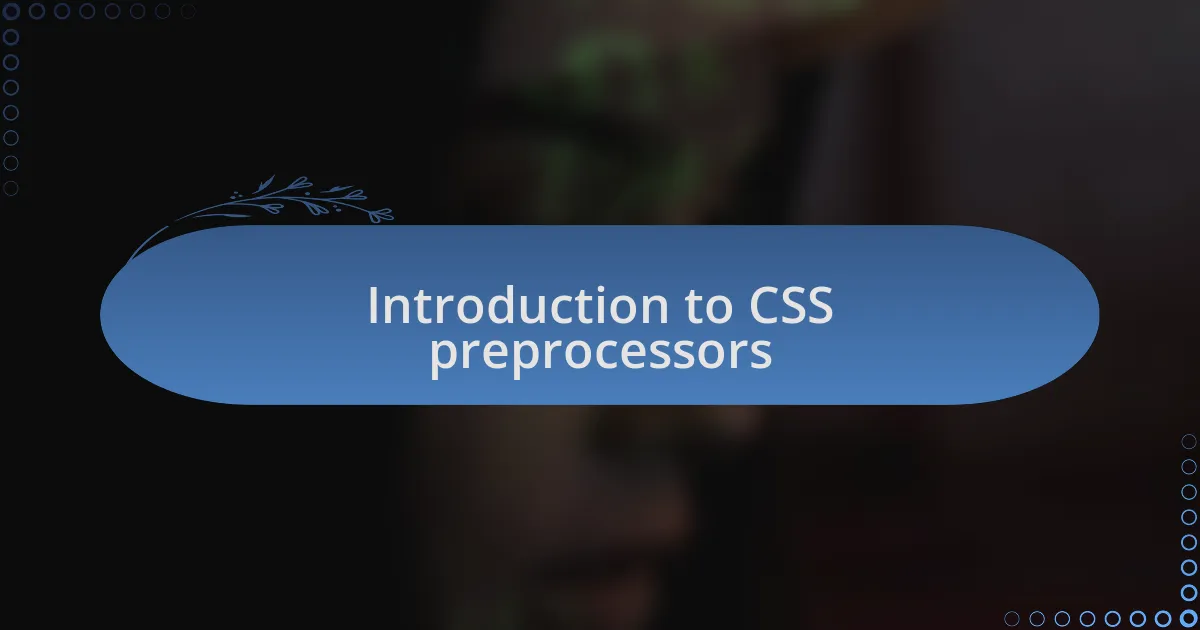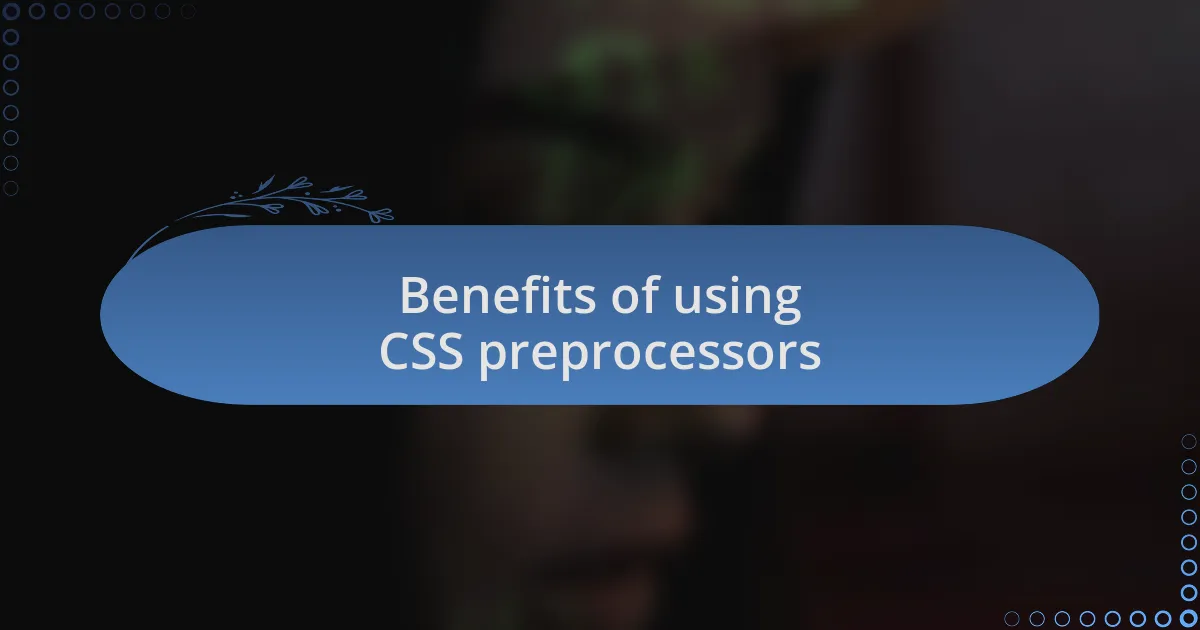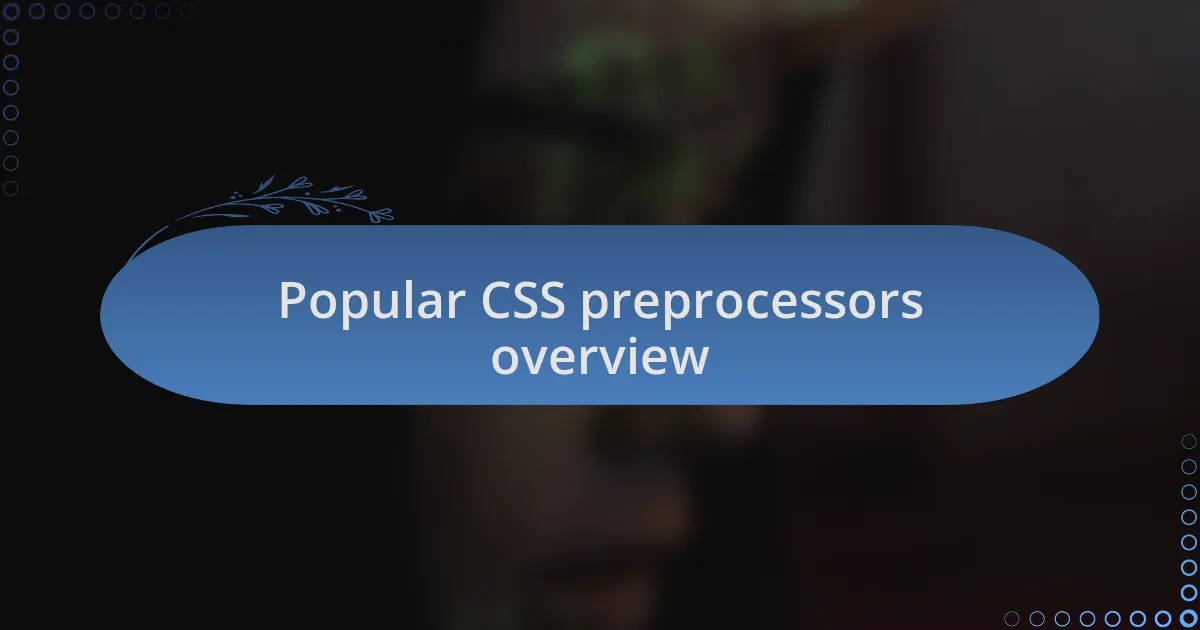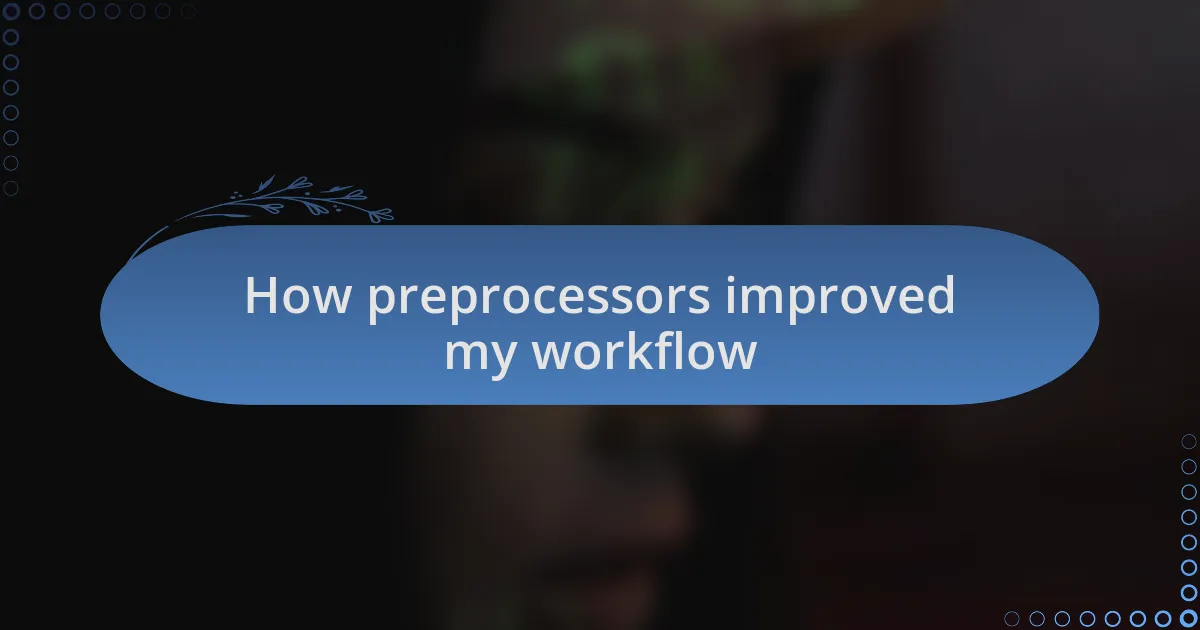Key takeaways:
- CSS preprocessors like Sass, LESS, and Stylus enhance coding efficiency by allowing the use of variables, mixins, and nested rules, leading to more maintainable stylesheets.
- They reduce redundancy in stylesheets; changing a single variable can adjust the entire site’s theme, streamlining design processes.
- Preprocessors support modularity by enabling developers to break styles into smaller, manageable files, making collaboration easier and more organized.
- Using tools like Stylus can change a developer’s approach to coding, promoting simplicity and improving overall workflow enjoyment.

Introduction to CSS preprocessors
CSS preprocessors are tools that extend the capabilities of CSS, allowing developers to write more structured and maintainable stylesheets. I remember the first time I encountered a preprocessor, specifically Sass; it felt like discovering a whole new world. The ability to use variables and nested rules was a game changer for my workflow.
Have you ever felt overwhelmed by CSS when managing large projects? That’s where preprocessors shine. They help streamline the process by introducing features like mixins and functions, which can simplify the way you handle styles across different components.
From my experience, using preprocessors like LESS or Sass has not only made my coding more efficient but also spurred my creativity. It’s satisfying to see code that is not just functional, but also elegant and organized, allowing me to focus more on the design aspects rather than getting tangled up in repetitive syntax.

Benefits of using CSS preprocessors
As I dove deeper into projects that involved complex layouts, I found that CSS preprocessors significantly reduced redundancy in my stylesheets. With features like variables, I could set a primary color once and use it throughout my project. The moment I realized I could adjust my entire website’s theme with just a few variable changes was truly liberating.
Another benefit that stood out to me was the power of modularity and organization. By breaking styles into smaller, manageable files, I could adopt a more systematic approach. Each time I created a new component, it felt like I was building a cohesive puzzle rather than a cluttered mess—designing became more enjoyable as a result.
I still remember a project where I used mixins for responsive design, eliminating the need to repeat media queries. This not only saved hours of coding but also made the styles output cleaner and more maintainable. Have you ever wished you could replicate styles without rewriting the same code? Preprocessors allow you to do just that, enhancing both efficiency and creativity in web development.

Popular CSS preprocessors overview
When exploring CSS preprocessors, three popular choices often come to mind: Sass, Less, and Stylus. I remember my first encounter with Sass—it felt like learning a new language that opened up endless possibilities like nested rules and mixins. The moment I grasped how to leverage these tools, my stylesheets transformed from a cumbersome journey into a streamlined process.
Less, on the other hand, introduced me to the beauty of functions and operations, making it easier to manipulate colors and sizes. I recall a project where I used Less to create dynamic styles based on user preferences, which made the user interface feel more personal and engaging. Have you ever had a lightbulb moment where a simple adjustment could elevate the user experience dramatically? That’s precisely what Less offered me.
Stylus, while sometimes overlooked, captivated me with its flexibility and minimalistic syntax. I found it fascinating how Stylus allows for an almost skeleton-like coding style, letting me write cleaner and more efficient code without unnecessary punctuation. This experience taught me the joy of simplicity in a world often overwhelmed with complexity. Don’t you find it exhilarating when a tool aligns perfectly with your coding philosophy? These preprocessors each bring unique strengths to the table, making them essential companions in the web development process.

How preprocessors improved my workflow
Once I started using CSS preprocessors, the impact on my workflow was immediate. For instance, with Sass, I embraced variables that allowed me to store colors and font sizes once and reference them throughout my stylesheets. This not only sped up my coding but also ensured consistency across my designs—an essential aspect when working on larger projects. Have you ever had that feeling of relief when you don’t have to remember the exact hex code for a color anymore?
My collaboration with other developers also became smoother. With Less, I could leverage mixins to create reusable components that my team could easily implement. I vividly remember a time when a last-minute design change required us to adjust button styles. Instead of scrambling through multiple files, we just updated one mixin, and the change cascaded beautifully throughout the site. It was thrilling to witness how a few lines of code could save so much time and effort.
Stylus took my efficiency a notch higher. I appreciated its flexibility, which encouraged a free-flowing approach to coding. When I first began using it, I was somewhat skeptical of the lack of required braces and semicolons. However, I quickly shifted my mindset; it felt liberating to focus solely on the logic of my styles. Can you remember the moment a tool changed your perspective on coding? For me, Stylus did just that, making my workflow not just faster, but significantly more enjoyable.